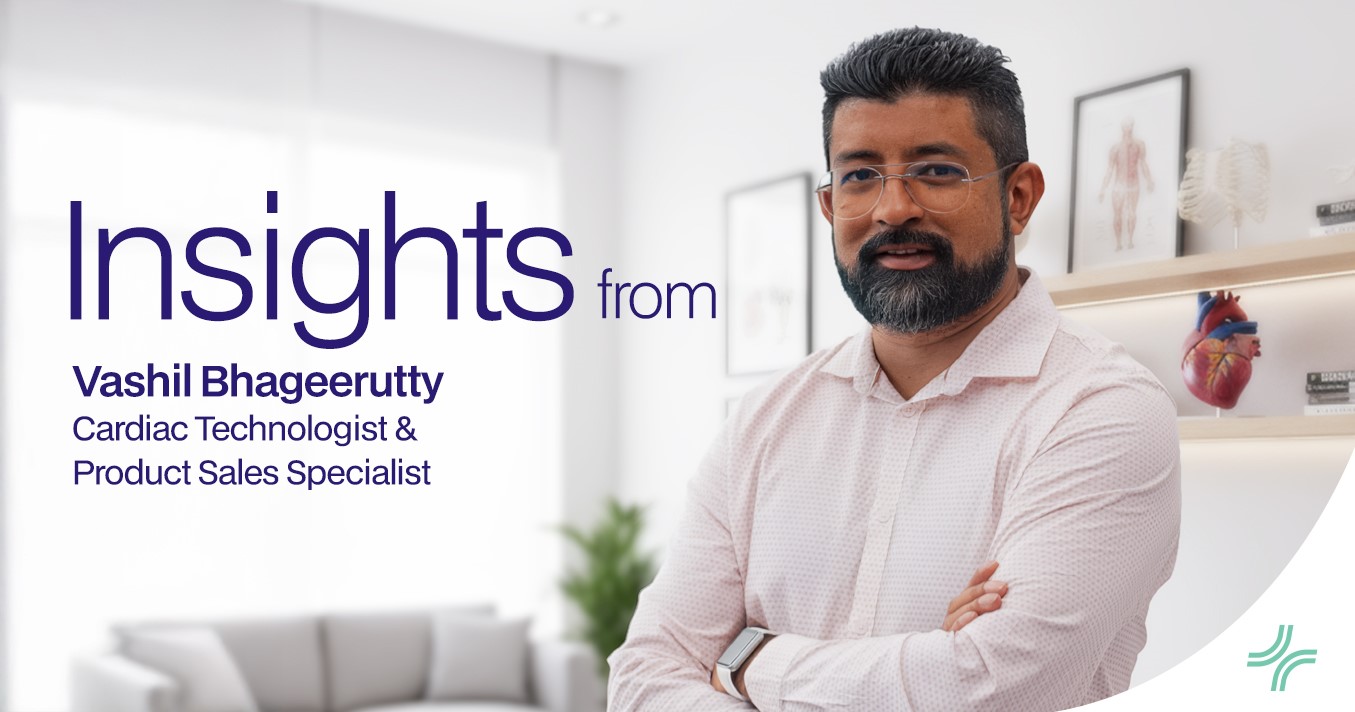- Healthcare
Importance of Follow-Up for Patients with Cardiac Devices

Cardiac devices such as pacemakers, implantable cardioverter-defibrillators (ICDs) and cardiac resynchronization therapy defibrillators (CRT-Ds) have transformed the management of heart rhythm disorders and heart failure. These technologies not only save lives but also significantly improve the quality of life for patients. However, their effectiveness depends heavily on consistent follow-up and monitoring.
Let’s explore in this article the distinctions between device types, the importance of follow-up care, patient lifestyle considerations and the innovations that are reshaping remote monitoring with insights shared by Vashil Bhageerutty, Cardiac Technologist & Product Sales Specialist at HealthActiv.
Understanding Cardiac Device Types and Their Roles
Pacemakers, ICDs and CRT-Ds serve distinct purposes based on the nature of the cardiac condition. A pacemaker is indicated for patients with slow heart rhythms and help correct slow heartbeat, by sending electrical impulses to maintain a normal rhythm. ICDs, on the other hand, are used for those at risk of sudden cardiac arrest due to fast arrhythmias. ICDs help monitor heart rate and deliver shocks when necessary to restore a safe rhythm. CRT-Ds are typically recommended for heart failure patients who experience both slow and fast heart rhythms. CRT-Ds combine the functions of a pacemaker and an ICD, featuring a biventricular pacemaker to synchronise ventricular contractions and a defibrillator to manage dangerous arrhythmias. This coordinated approach improves the efficiency of the heart’s pumping action and offers comprehensive support for complex cardiac conditions.
Why Regular Follow-Up Matters?
Regular follow-up is essential for patients with cardiac devices. These appointments ensure that the device is functioning correctly, the battery is within safe limits, and any potential malfunctions are identified early. Timely follow-ups are not just technical check-ins; they are vital touchpoints for personalised care and long-term health management.
- Device Check: A programmer communicates with the device via radio waves to assess its performance.
- Battery Monitoring: Battery life is evaluated to anticipate replacement, typically every 4 to 8 years.
- Malfunction Detection: Follow-ups help identify issues like sensing errors or loss of capture, even if symptoms aren’t present.
- Lead Integrity: The leads connecting the device to the heart are checked for damage or wear.
- Setting Adjustments: Settings can be fine-tuned to match the patient’s changing needs or correct detected problems.
- Arrhythmia Detection: Stored data is reviewed to identify abnormal heart rhythms for early intervention.
- Data Review: Clinicians examine memory logs for pacing activity and rhythm events since the last visit.
- Physical Exam: The wound site and overall condition are inspected to ensure proper healing and device placement.
Advances in Technology and Remote Monitoring
At HealthActiv, we stay aligned with cutting-edge solutions and proudly introduce technologies that help healthcare professionals enhance patient engagement and streamline care. Cardiac care is evolving rapidly with the rise of remote monitoring, and Abbott’s Gallant™ devices exemplify this shift. These implantable defibrillators now feature Bluetooth connectivity, enabling real-time data sharing, enabling clinicians to monitor device performance remotely and respond to clinical events more quickly.
Paired with the secure Abbott’s myMerlinPulse™ mobile app, the system streamlines remote monitoring and encourages greater patient involvement. The app not only facilitates regular data sharing but also prompts patients to schedule follow-up appointments and alerts them to any connectivity issues. For healthcare professionals, it offers an intuitive interface to program device settings and track patient progress, supporting more accurate and personalised care. This app can help detect early asymptomatic episodes and patient-triggered alerts, allowing for timely interventions and fewer hospital readmissions. Its secure data transmission ensures privacy and efficiency, empowering both patients and providers in the delivery of smarter cardiac care.
Living Well with a Cardiac Device
With the right device and optimal programming, most patients can maintain a normal lifestyle. Advances in technology have made these devices more adaptable and less intrusive. One of the most prominent cases might be the Danish footballer Christian Eriksen, who returned to professional play with an ICD after a cardiac event, demonstrating the potential for full recovery and high-level activity.
However, patients must observe certain precautions, especially in the weeks following surgery. These include:
- Avoiding heavy lifting, strenuous activities and raising the arm on the side of the implant above shoulder level.
- Electromagnetic interference is another concern; patients should keep cell phones at least six inches away from the device and avoid strong magnetic fields from industrial equipment or certain consumer electronics.
- Airport security procedures may require special screening, and patients are advised to always carry their device identification card.
- Driving and other activities should only be resumed once cleared by a physician.
- Keeping the incision site dry and monitoring for signs of infection are also important during recovery.
Cardiac devices are life-saving tools that require ongoing care and attention. Understanding their functions, committing to regular follow-ups and accepting remote monitoring technologies can empower patients to live a healthier, fulfilling and active life. The combination of advanced hardware and smart digital tools reduces the burden of in-person visits, supports early detection of arrhythmias and contributes to improved clinical outcomes. As innovation continues, the connection between patients and healthcare providers grows stronger, ensuring better outcomes and peace of mind.
Do not forget that it is highly recommended to consult a healthcare professional to determine the most appropriate approach for your specific health condition.



